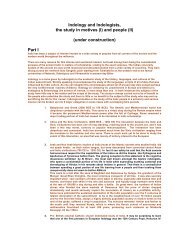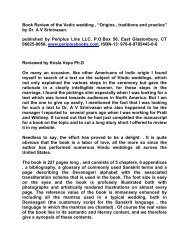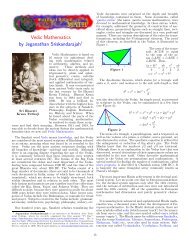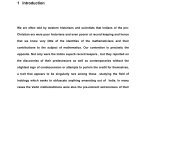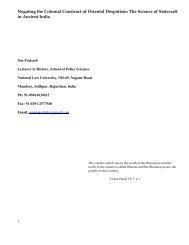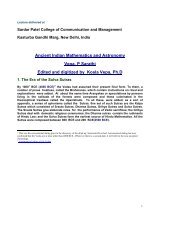The Dhaarmik Traditions - Indic Studies Foundation
The Dhaarmik Traditions - Indic Studies Foundation
The Dhaarmik Traditions - Indic Studies Foundation
Create successful ePaper yourself
Turn your PDF publications into a flip-book with our unique Google optimized e-Paper software.
Once they decide, the date of the engagement and marriage is fixed. <strong>The</strong>re<br />
are various pre wedding functions and rituals one of which is the<br />
engagement ceremony, and which is the most important since it marks the<br />
beginning of the wedding ceremony. In this day and age, especially among<br />
the Diaspora when an extended courtship appears to be the norm rather<br />
than the exception, it is not uncommon for an engagement ceremony to<br />
be held months before the wedding is conducted. It is known by different<br />
names in different regions of the country such as Misri, ring ceremony,<br />
aashirwad, Vaagdaanam or Vaakdaana , Nischitaartha and mangni.<br />
Nischitaartha means the process of making a decision and a commitment<br />
to each other, and is generally the term used in the Southern part of India.<br />
<strong>The</strong> term literally means "firming up". <strong>The</strong> ceremony is based on vedic<br />
practices going back over 5000 years begins with a Ganapati Puja and<br />
consists mainly of pledges between the 2 fathers. This is done by invoking<br />
the lineage of the families and making a formal proposal for the alliance.<br />
Variations notwithstanding, the general practice is for the father of the<br />
bride to make the initial overture. <strong>The</strong> affirmative response by the parents<br />
of the groom, signifies the resulting commitment to the marriage<br />
In the Western tradition, an engagement consisting mainly of a proposal<br />
by the prospective groom to the intended bride to marry him is generally<br />
made in private and is accompanied by the gift of a ring to the lady. an<br />
engagement party may then take place depending on the interval between<br />
the engagement and the marriage itself<br />
• Muhurtam: Muhurtam means determining the auspicious part of the<br />
day for the marriage. <strong>The</strong> period that is considered auspicious starts<br />
from 7.00 p.m. and goes on till the next day until about 11 am. Telugu<br />
Weddings don't usually take place in the months of Aashad, Bhadrapada<br />
and Shunya as these months are considered not auspicious.<br />
• Chaitra<br />
Vaishakh<br />
Jeshta<br />
Ashadh<br />
Shrawan(Sawan)<br />
Bhadrapad(Bhado)<br />
107



